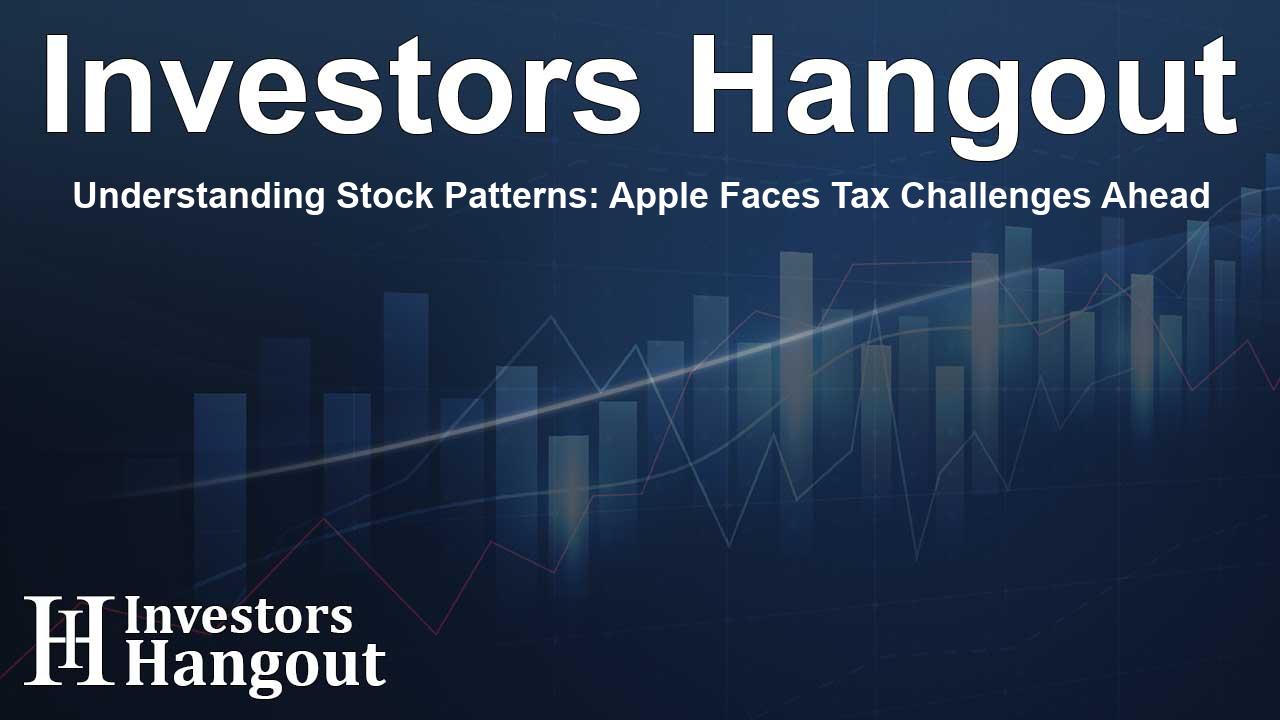Understanding Stock Patterns: Apple Faces Tax Challenges Ahead

Making Sense of Stock Patterns in a Shifting Market
In a fast-moving market, recognizing repeatable price patterns helps you separate noise from signal. Lately, big moves have clustered around semiconductor stocks tied to artificial intelligence. These swings aren’t random; they’re often part of larger structures that can hint at what comes next.
A Head-and-Shoulders Setup Taking Shape
One notable setup appears to be forming in the VanEck Semiconductor ETF: a possible head and shoulders pattern. This classic formation has three peaks—the left shoulder, a higher head, and a right shoulder—connected by a neckline that often acts like a floor. Traders watch that neckline because it marks the line between a routine pullback and something more meaningful.
What a Neckline Break Could Mean
The pattern isn’t complete until the neckline gives way. If price cleanly breaks below that support, it can signal a shift from uptrend to downtrend. In a semiconductor-heavy landscape, that kind of break would raise the risk of a broader pullback in leaders such as NVIDIA Corp, Advanced Micro Devices, and Micron Technology Inc., all central to the current AI narrative.
Apple Inc.: Recent Setbacks
Against this backdrop, Apple Inc. stumbled following its iPhone 16 announcement. The dip arrived while the company continues to wrestle with a $14 billion tax battle in Europe—an overhang that could shape future tax obligations and, by extension, investor expectations.
Apple’s Financial Picture in Context
A higher tax bill can compress margins and reduce flexibility, potentially affecting Apple’s stock and decision-making. Rolling out new products can help steady demand and sentiment, but those launches now sit alongside heavier fiscal considerations that may influence pacing, pricing, and capital allocation.
Reading Market Expectations
All eyes turn to the upcoming Consumer Price Index (CPI) report for a read on inflation and growth pressures. Markets look positioned for a steady, in-line print. Any surprise—hotter or cooler—could jolt both stocks and bonds as investors quickly reset expectations.
Positioning Matters
Knowing how Wall Street is positioned helps you estimate reaction risk. When exposure tilts one way, even small surprises can spark big moves. Political crosscurrents add another layer; with key debates and decisions ahead, headlines can amplify swings that start with CPI or earnings.
Watching the Big Tech Tape
Early money flows point to net buying in Amazon.com, Inc., Alphabet Inc., and Meta Platforms Inc., while Apple shows negative flows. That split says a lot about current preferences inside mega-cap tech and how investors are sorting perceived winners and laggards in a shifting backdrop.
Following the “Smart Money”
One way to sharpen your process is to track money flows in core ETFs such as SPDR S&P 500 ETF Trust and Invesco QQQ Trust. Persistent inflows or outflows can hint at where institutional capital is leaning, helping you frame decisions across both stocks and commodities without chasing every headline.
Adapting as Conditions Change
Flexibility is a strategy. Keep long-term positions that reflect your core thesis, but be willing to layer on protection when risk rises. Cash, staged entries, and defined hedges can reduce the sting of drawdowns while keeping you in the game if the trend resumes.
Building a Protective Band
Consider setting a protective band for portfolio exposure—think in terms of a range from 0% to 100%—so you can dial risk up or down as conditions change. The goal is balance: mitigate downside while staying open to upside, using your targets, time horizon, and tolerance as the guide.
The Traditional Portfolio, Revisited
If you lean toward a classic 60/40 split between stocks and bonds, the bond sleeve matters more when rates are uncertain. Focusing on high quality, short-duration bonds can help manage interest-rate risk while still providing ballast to equities in a choppy tape.
Keeping the Long View
The Arora Report has maintained a consistent record of accurate market calls, repeatedly underscoring the importance of spotting AI and broader technology trends early. Staying informed—about patterns, positioning, and policy—remains central to building and updating a strategy that can weather what comes next.
Frequently Asked Questions
What is a head and shoulders pattern?
It’s a chart formation that often signals a trend reversal after an uptrend. You’ll see a left shoulder, a higher head, and a right shoulder, with a neckline acting like a support line. A decisive break below that neckline increases the odds of a move lower.
How could Apple’s tax fight affect its stock?
If Apple faces higher long-term tax obligations, earnings and cash flow could be pressured, which may weigh on valuation. That, in turn, can sway investor confidence even as the company launches new products like the iPhone 16.
Why does the CPI report matter for markets?
CPI shapes inflation expectations. A reading above or below what investors expect can shift interest-rate views, moving both bond yields and stock prices as portfolios adjust.
What are practical ways to hedge volatility?
Common tools include holding cash reserves to reduce drawdown risk, using options to define downside, and, for experienced investors, short selling. Position sizing and staged entries can also soften the impact of sharp swings.
What do “money flows” tell me?
They reflect whether capital is moving into or out of specific stocks and ETFs. Persistent inflows can signal building demand; steady outflows can flag caution. Watching flows helps you align with, or deliberately fade, prevailing sentiment.
About The Author
Contact Evelyn Baker privately here. Or send an email with ATTN: Evelyn Baker as the subject to contact@investorshangout.com.
About Investors Hangout
Investors Hangout is a leading online stock forum for financial discussion and learning, offering a wide range of free tools and resources. It draws in traders of all levels, who exchange market knowledge, investigate trading tactics, and keep an eye on industry developments in real time. Featuring financial articles, stock message boards, quotes, charts, company profiles, and live news updates. Through cooperative learning and a wealth of informational resources, it helps users from novices creating their first portfolios to experts honing their techniques. Join Investors Hangout today: https://investorshangout.com/
The content of this article is based on factual, publicly available information and does not represent legal, financial, or investment advice. Investors Hangout does not offer financial advice, and the author is not a licensed financial advisor. Consult a qualified advisor before making any financial or investment decisions based on this article. This article should not be considered advice to purchase, sell, or hold any securities or other investments. If any of the material provided here is inaccurate, please contact us for corrections.
